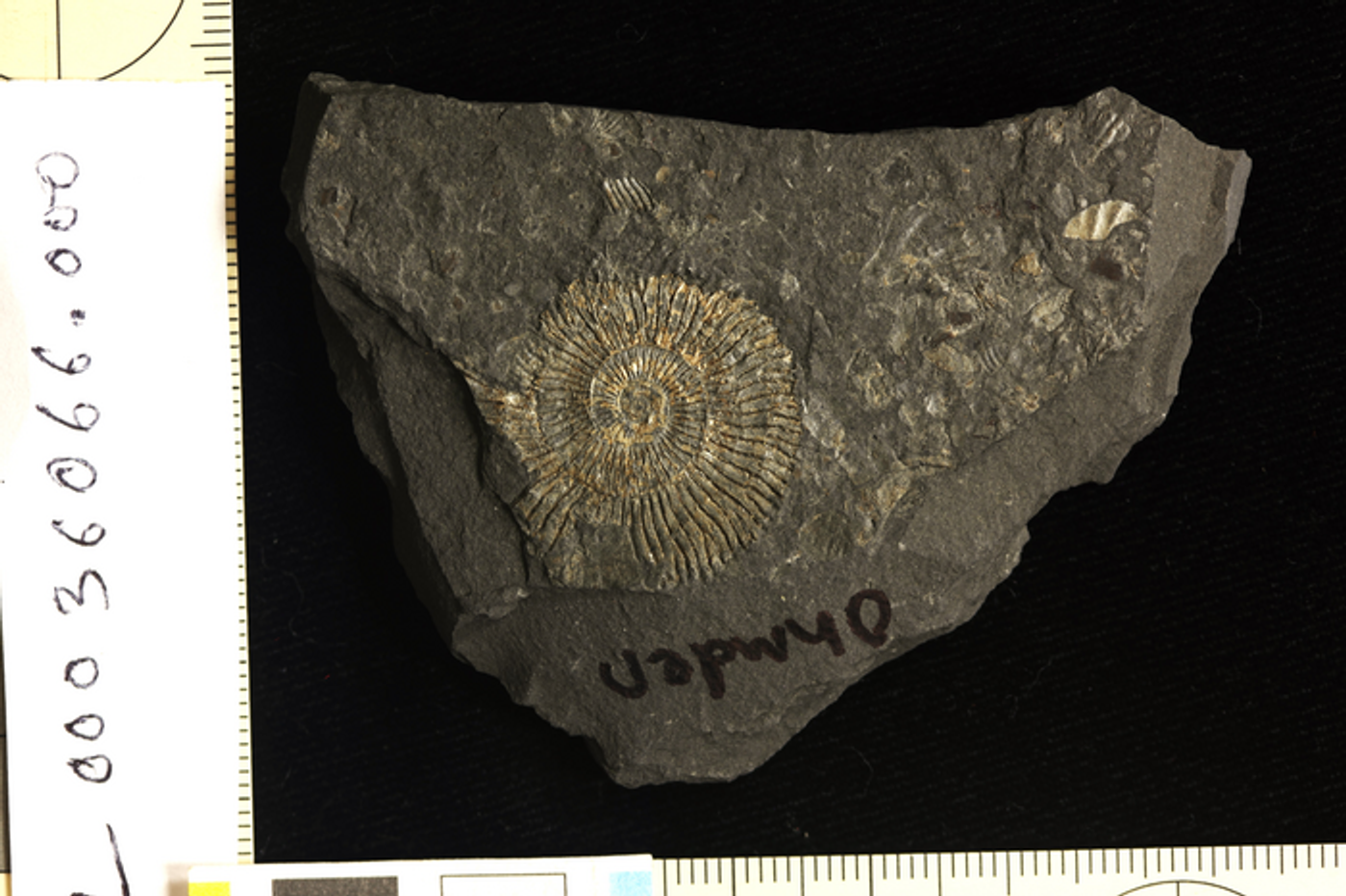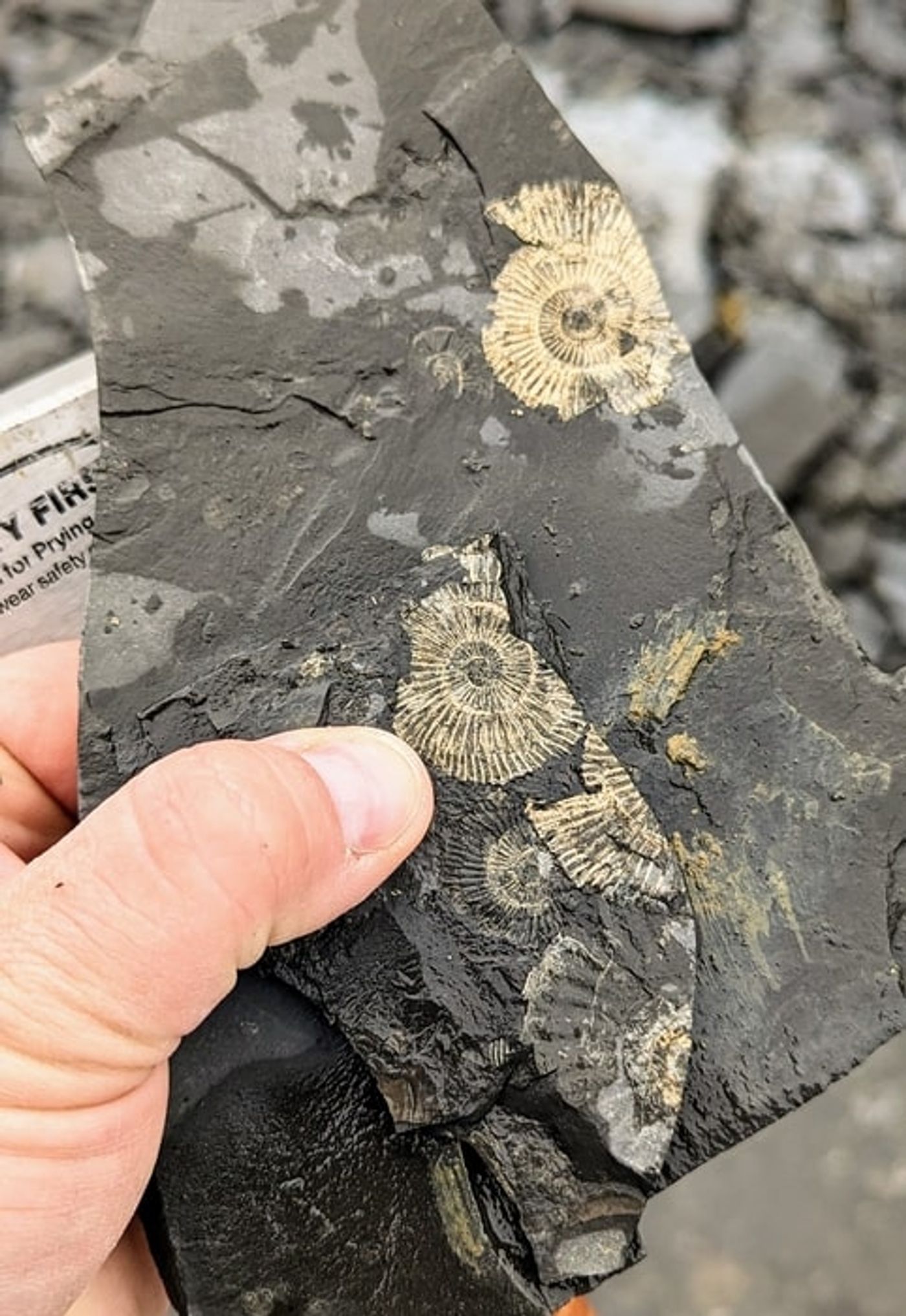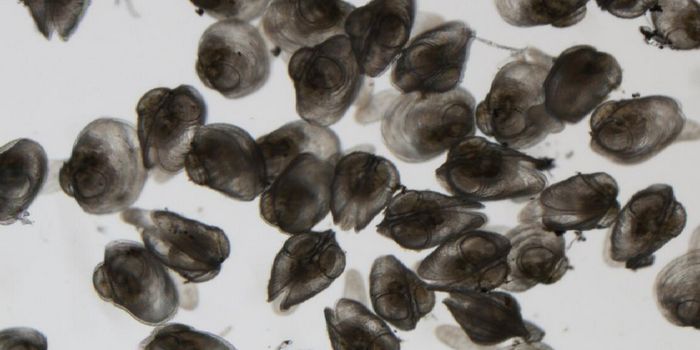Fossil Shine Hints at Formation Processes
A recent study published in Earth Science Reviews examines how both the shine and excellent preservation of fossils discovered at Germany’s Posidonia Shale is not the result of pyrite (aka fool’s gold), which has been the longstanding hypothesis, but from an assortment of minerals that could indicate the environment in which the fossils formed. This study holds the potential to help scientists better understand the formation and evolution of fossils, specifically pertaining fossils from the Early Jurassic, which are known to be some of the best-preserved fossils in the world.
Image of an ammonite fossil collected from the Ohmden quarry, Posidonia shale lagerstatte. (Credit: Sinjini Sinha/The University of Texas at Austin Jackson School of Geosciences)
Golden ammonite fossils collected at the Ohmden quarry. (Credit: Rowan Martindale/The University of Texas at Austin Jackson School of Geosciences)
“When you go to the quarries, golden ammonites peek out from black shale slabs,” said Dr. Rowan Martindale, who is an associate professor at the University of Texas at Austin’s (UT Austin) Jackson School of Geosciences. “But surprisingly, we struggled to find pyrite in the fossils. Even the fossils that looked golden, are preserved as phosphate minerals with yellow calcite. This dramatically changes our view of this famous fossil deposit.”
For the study, the researchers examined dozens of the 183-million-year-old fossil samples from the Posidonia Shale to observe their chemical compositions under electron scanning microscopes, and include specimens such lobsters, ichthyosaur embryos, and squids with ink-sacs.
The researchers discovered that all the fossils were comprised of phosphate minerals which was in stark contrast to the surrounding shale rock they were encased in, as that was splattered with microscopic clusters of framboids, or pyrite crystals.
“I spent days looking for the framboids on the fossil,” said Sinjini Sinha, who is a PhD student at the Jackson School, and a co-author on the study. “For some of the specimens, I counted 800 framboids on the matrix while there was maybe three or four on the fossils.”
While the study’s findings bring into question longstanding hypotheses of exceptionally preserved fossils found at Posidonia, it carries on from a previous study regarding the examination of konservatlagerstätten, which is another type of excellently preserved group of fossils.
“It’s been thought for a long time that the anoxia causes the exceptional preservation, but it doesn’t directly help,” said Sinha. “It helps with making the environment conducive to faster fossilization, which leads to the preservation, but it’s oxygenation that’s enhancing preservation.”
What new discoveries will scientists make about fossils and the processes behind their preservation in the coming years and decades? Only time will tell, and this is why we science!
Sources: Earth Science Reviews, Texas Geosciences
As always, keep doing science & keep looking up!










